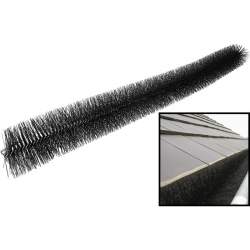Birds

Rock or Feral Pigeons
Northern hemisphere rock pigeons (Columba livia) are native to Eurasia. They were brought to New Zealand by early settlers as food, as pets and as racing or messenger pigeons, and they rapidly established large wild populations.
Rock pigeons prefer to roost and nest under overhangs on rock ledges. Their main populations are on coastal sea cliffs, inland gorges and bluffs, and urban sites offering sheltered ledges. They eat grains, legumes such as peas and beans, and sometimes slugs and snails. In cities they scavenge for scraps.

Red-Billed and Black-Billed Seagulls
The gulls threaten rare birds such as the New Zealand dotterel, and some terns and petrels by preying on eggs and chicks.
The red-billed gull has a white body with grey wings tipped with black then white. Their bills and legs are red when they are adult
All three species of gull in New Zealand are native, but only the black-billed gull (Larus bulleri) is endemic (found nowhere else). Similar in size to red-billed gulls, their bills are black, and they are longer and finer in shape, with reddish-black legs and paler wings.

Sparrows
Many farmers have rued the introduction of house sparrows (Passer domesticus). They were intended to help reduce the swarms of crop-eating insect pests. However, while they do feed their nestlings on caterpillars, beetles, flies and spiders for the first week after hatching, at other times they are more interested in grains and fruit than insects. They can cause significant damage to wheat, barley and maize crops.

Common Myna
The myna (Acridotheres tristis) was introduced from India in the 1870s as a cage bird, but is now well-established in open country in the North Island north of Whanganui. It eats a wide range of insects, seeds and fruit, and may cause damage to orchards and other fruit crops. It also raids the nests of other birds for eggs and chicks as well as feeding on discarded human food scraps.
Starlings
For farmers, the common starling (Sturnus vulgaris) has been a useful introduction. It helps control unwanted insects, including ticks on cattle and sheep, and crop pests such as caterpillars and grasshoppers. Some farmers encourage starlings to prey on grass grubs by placing nest boxes around fields.
However, starlings damage grapes and other fruit crops, and compete with tūī and bellbirds for the nectar of flax, rātā and other native plants. Large flocks roosting in cities soil footpaths and cars.

Treatment Options:
We offer a wide range of solutions for birds which include:
Netting
We offer big and small netting jobs commercial and residential
Light reflection can be used in conjuntion with other techniques to deter birds from landing in unwanted areas
Gutter brushes
Gutter brushes/whiskers are a great way for stopping birds for sitting on roof spaces and kepping them from coming in under the roof and into the attics.
Cage Trapping
Cage trapping is also a great way to eliminate big numbers of birds nesting in unwanted areas as well as training them to stay away
We offer baiting services to eliminate large numbers of birds.
The right bird treatment is subject to the location and bird type so please call to discuss the best option.
Call 07 213 1317





Step 1: Call to identify the pest issue

Step 2: Book a date which best suits you

Step 3: We come out and do the job

Step 4: Another Happy Customer







